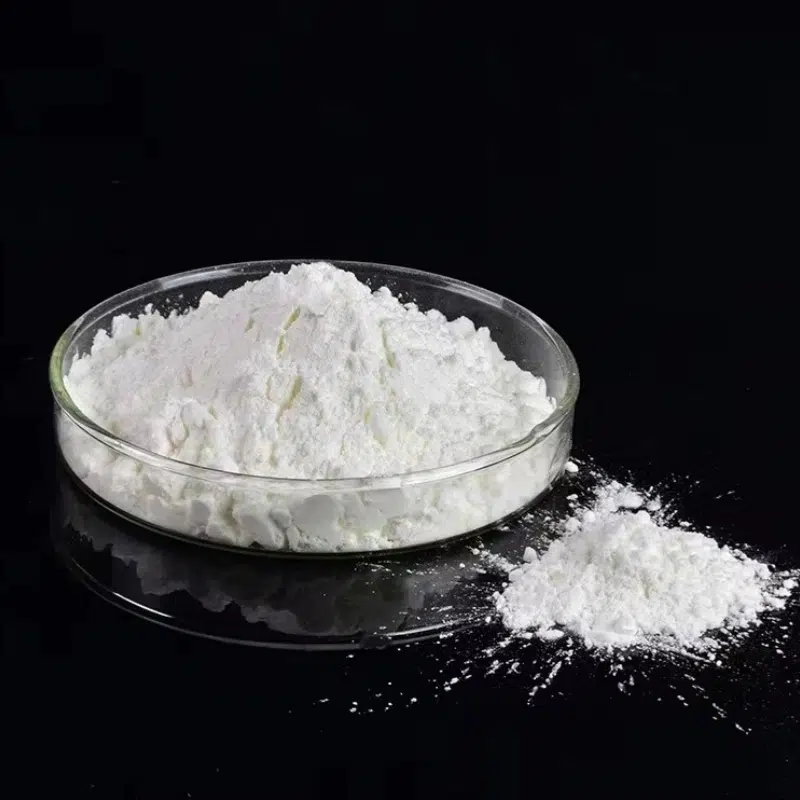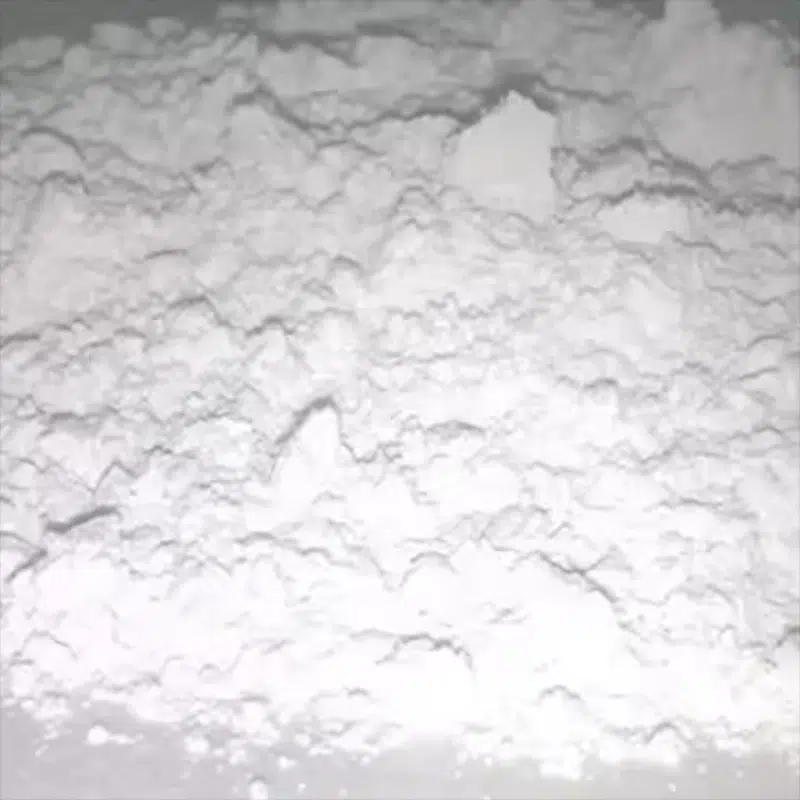


Wholesale Methyl Cellulose Powder
Features
Methyl cellulose is a non-ionic cellulose ether that is odorless, tasteless, non-toxic, and typically appears as a white, light yellow, or light gray powder. Methyl cellulose has good water solubility and can quickly disperse and swell in hot water at 80-90 ℃. After cooling, it can quickly dissolve and form a transparent colloidal solution. Meanwhile, methyl cellulose has good wetting, dispersibility, adhesion, thickening, emulsifying, water retention, film-forming properties, as well as impermeability to oils and fats. It is widely used in industries such as construction, building materials, dispersed coatings, wallpaper pastes, polymerization aids, cosmetics, pharmaceuticals, paint removers, food, leather, ink, papermaking, etc. It is mainly used as a thickener, binder, water retaining agent, film-forming agent, excipient, emulsifier, etc., to improve product performance and quality.
Market Prospects
Methyl cellulose is widely used in various fields such as building materials, coatings, pharmaceuticals, and food. With the continuous development of these industries, market demand will continue to grow. Through continuous technological innovation, the performance of methyl cellulose products will continue to improve, meeting more high-end application needs and expanding market space. As an environmentally friendly material, methyl cellulose meets global environmental regulations and will usher in more application opportunities in fields such as green buildings and eco-friendly packaging.
Hydroxypropyl Methyl Cellulose Manufacturing Process
As a professional cellulose factory,we select high-quality wood cellulose, such as cotton short fibers or wood pulp, is crushed and screened to ensure uniform particle size of the raw materials. Soak cellulose in a strong alkaline solution to ionize the hydroxyl groups in cellulose molecules, preparing for subsequent methylation reactions. Add a methylating agent, such as chloromethane, to the alkalized cellulose solution. By controlling the reaction conditions, the hydroxyl groups in the cellulose molecules can undergo a substitution reaction with the methyl groups, resulting in the formation of methyl cellulose. Wash the reaction product to remove residual alkali and methylating agent, then dry it to ensure that the product meets the water content standard. Crush and sieve the dried methyl cellulose to obtain the final product that meets the particle size requirements. Strictly inspect the quality of finished products, including viscosity, purity, moisture content, and other indicators, to ensure that the products meet the standards before packaging and preparing for shipment.
Use Precautions
During the dissolution and mixing process, pay attention to controlling the temperature to avoid excessively high or low temperatures affecting the solubility and properties of methyl cellulose. Methyl cellulose needs to be slowly and evenly stirred when adding solvents to avoid clumping or agglomeration and ensure the uniformity of the solution. During the operation, it is recommended to wear protective goggles and gloves to avoid direct contact with the skin and eyes. If accidentally touched, please rinse immediately with plenty of water and seek medical attention. Methyl cellulose should be stored in a dry, ventilated, and dark environment to prevent moisture and high temperatures, and to maintain packaging sealing.
●FREE SAMPLE
*Customization is always available, please mark down your need in cart or just contact us.
Project Monitoring
Shipping Order Track
Instructions for Use
VIP Customer Service
Intact Guarantee
Characteristics
- Water Solubility: Methyl cellulose molecules contain a large number of hydroxyl groups, which can form hydrogen bonds with water molecules, making them highly water-soluble. At the same time, the methyl groups in methylcellulose molecules reduce the resistance of the molecules, increase their degrees of freedom, and facilitate their dissolution and swelling in water. Therefore, methyl cellulose can dissolve in hot water to form a transparent colloidal solution and has a certain degree of cold water swelling ability.
- Thermal Stability: The methyl and hydroxyl groups in the molecular structure of methyl cellulose can remain relatively stable when heated, and are not easily decomposed or denatured. Meanwhile, methyl cellulose molecular chains can form a three-dimensional network structure at high temperatures. Therefore, the aqueous solution of methyl cellulose is quite stable at room temperature, and can form gel at high temperature, and the gel state can change reversibly with temperature.
- Film Forming Ability: Methyl cellulose molecular chains can form hydrogen bonds and other interaction forces, allowing the molecular chains to tightly arrange and form a continuous membrane structure. Meanwhile, the hydroxyl and methyl groups in methyl cellulose molecules can form hydrogen bonds with water molecules, enhancing the strength and stability of the membrane. Therefore, methyl cellulose can form films with excellent toughness, flexibility, and transparency.
- Water Retention: The hydroxyl groups on the molecular chains of methyl cellulose can form hydrogen bonds with water molecules, effectively retaining moisture. In addition, the membrane structure formed by methyl cellulose can also to some extent prevent the evaporation and loss of water. Therefore, methyl cellulose has good water retention properties.
- Thickening And Rheological properties: Methyl cellulose molecular chains can form a network structure in water, increasing the internal friction and viscosity of the solution. Meanwhile, the interaction forces between the molecular chains of methyl cellulose can also affect the fluidity and stability of the solution. Therefore, methyl cellulose can significantly increase the viscosity and consistency of solutions, and has good rheological properties.
- Dispersibility And Emulsivity: The hydroxyl and methyl groups on the molecular chain of methyl cellulose can form hydrogen bonds and van der Waals forces with the surface of particles, thereby preventing flocculation and coalescence between particles. Meanwhile, the molecular chains of methyl cellulose can form a network structure in water, enveloping oil droplets or solid particles, improving the dispersibility and emulsifying stability of the system. Therefore, methyl cellulose can be used as a dispersant and emulsifier to improve the dispersibility and emulsion stability of the system.
- Chemical Stability: The methyl and hydroxyl groups in the molecular structure of methyl cellulose are not easily decomposed or denatured in acidic or alkaline environments. In addition, the interaction forces between the molecular chains of methyl cellulose also give it a certain chemical stability in aqueous solutions. Therefore, the aqueous solution of methyl cellulose remains stable within a wide pH range (such as pH 2-12).
Main Function
- Building Material
- Methyl cellulose is widely used in cement, mortar, joint adhesive and other mixtures, which can increase the viscosity and stability of materials and improve construction performance.
- Coatings Field
- Methyl cellulose has important applications in latex paint, water-based coatings, and other fields. Due to its excellent film-forming and suspending properties, it can increase the adhesion and coverage of coatings, while also serving as a thickener, dispersant, etc. to improve the flowability and application performance of coatings.
- Medical Field
- Methyl cellulose is widely used in the pharmaceutical field, mainly for the production of drug carriers, sustained-release agents, capsule shells, etc. Due to its excellent biocompatibility and degradability, it is widely used as a coating material for oral medications. In addition, it can also be used to make topical medications such carboxy methyl cellulose eye drops and ointments, which have good moisturizing and lubricating effects.
- Food Sector
- Methyl cellulose is also widely used in the food industry, mainly for making desserts such as jelly, pudding, and ice cream. Due to its good water retention and stability, it can increase the taste and shelf life of food. In addition, cellulose for food can also be used as a food additive to improve the texture and taste of food.
- Cosmetics Field
- The application of methyl cellulose in the field of cosmetics is mainly concentrated in skincare and cosmetic products, as a film-forming agent, dispersant, etc., to enhance the stability and effectiveness of products.
- Agriculture
- Methyl cellulose also has applications in the agricultural field, such as serving as a carrier for pesticides and fertilizers, enhancing their adhesion and stability.
- Other Fields
- Methyl cellulose is also widely used in industries such as textiles, printing and dyeing, tobacco, etc. as a binder, dispersant, etc., to improve the quality and performance of products.
Appearance | White Or Light Yellow Or Light Gray | |
Purity | 99.90% | |
Particle Size | 90% Min. Passing Through 80 Mesh | |
Bulk Density(g/l) | 350~420 | |
Methoxy Content(%) | 21~31 | |
Hydroxyl Propyl Group % | 4-12 | |
Classification | Chemical Auxiliary Agent | |
PH(1%25℃) | 5.5-9.5 | |
Moisture | ≤5% | |
Ash | ≤5% | |
Grade | Industrail Grade | |
Storage | Dry Cool Place | |
Viscosty | 400D/400 | 350-500 |
6TD/6T | 5500-6500 | |
15TD/15T | 12000-17000 | |
35TD/35T | 32000-37000 | |
50TD/50T | 45000-55000 | |
75TD/75T | 70000-80000 | |
